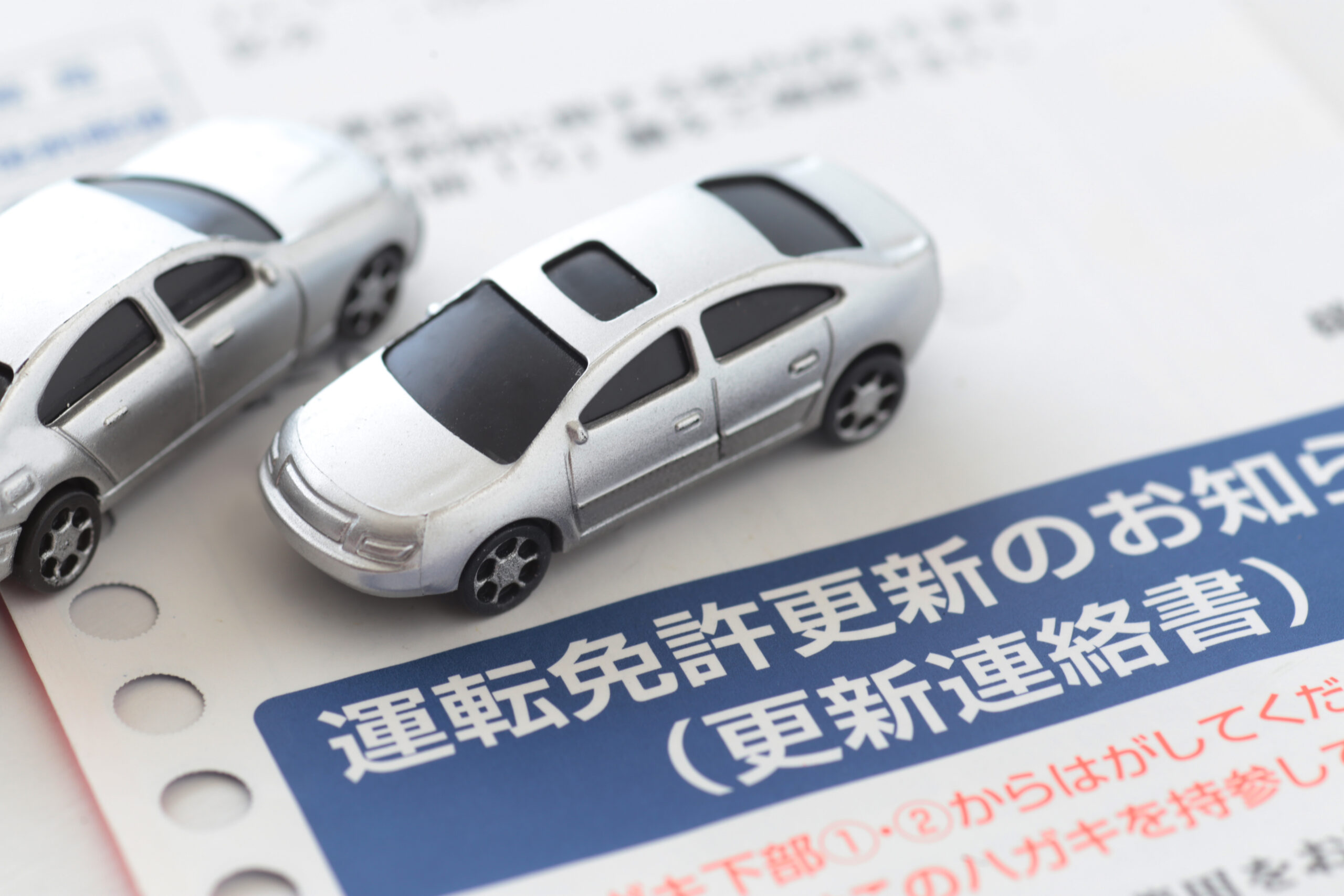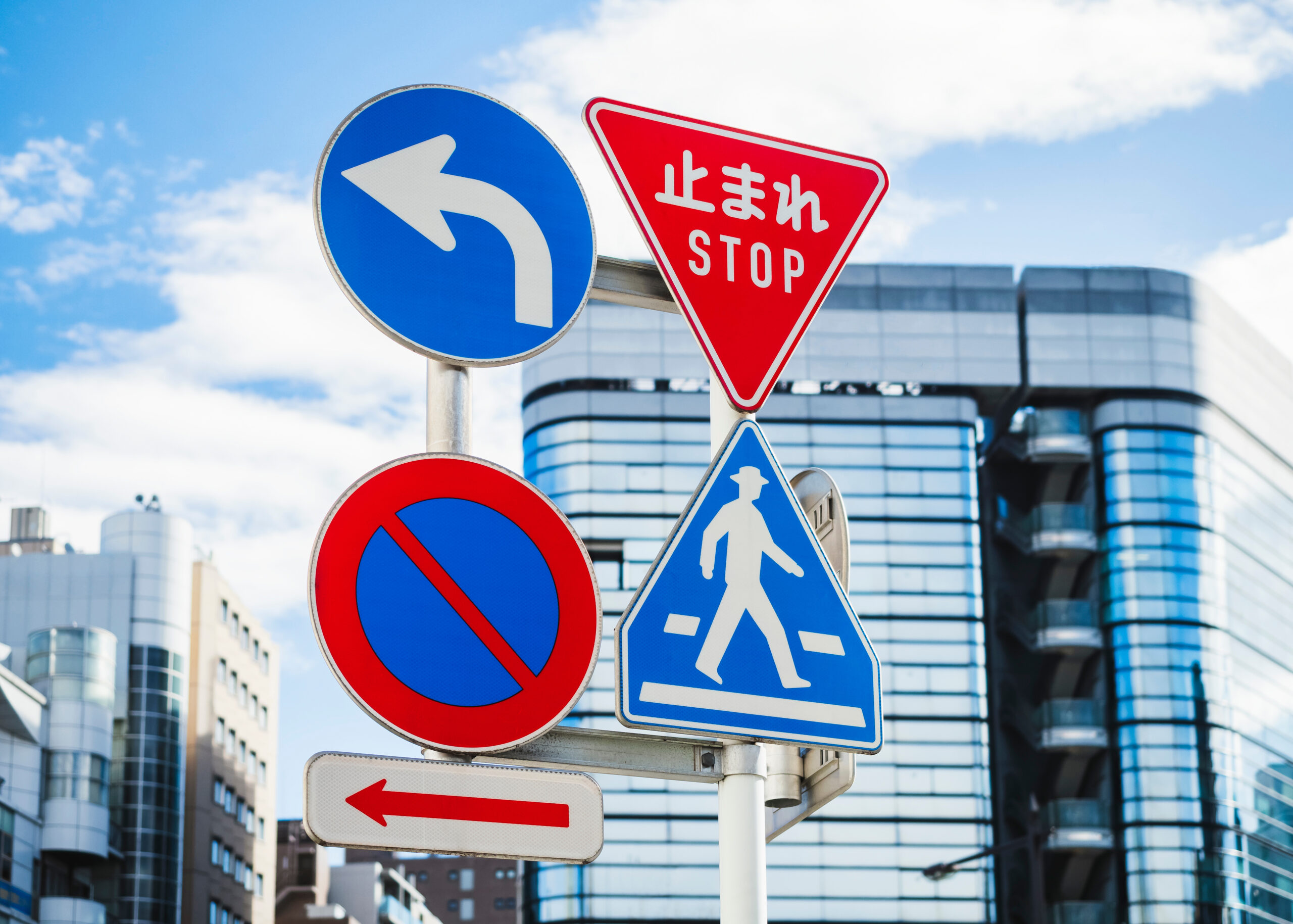Driving in Japan: Everything Foreign Residents Need to Know About Japanese Driver’s Licenses

“How do I convert my foreign license in Japan?” “Is the process complicated?” “What documents do I need?” These are common questions that many foreigners in Japan struggle with when facing the challenge of obtaining a Japanese driver’s license.
The good news is that converting your foreign license to a Japanese one is absolutely achievable with the right preparation and knowledge. While the process may seem daunting at first, it can be broken down into manageable steps that anyone can follow. In this comprehensive guide, we’ll walk you through everything you need to know about getting a Japanese driver’s license as a foreigner. From converting your existing license to understanding the requirements for international permits, we’ll cover all the essential information you need for driving legally in Japan.
Whether you’re planning to live in Japan long-term or just staying for an extended period, this article will serve as your complete resource for understanding Japanese driving requirements, license conversion procedures, and important regulations you need to follow.
Understanding the Basics of Japanese Driver’s Licenses for Foreigners
Importance of a Japanese Driver’s License for Foreigners
For foreign residents living in Japan, possessing a Japanese driver’s license signifies independence and the ability to explore the country beyond the confines of public transportation. It is not only a legal requirement but also a gateway to convenience and freedom. Having a valid Japanese driver’s license means you can legally drive anywhere in the country, enabling you to travel to rural destinations, go on impromptu road trips, and manage your daily commutes efficiently.
Moreover, a Japanese driver’s license acts as an important form of identification, widely accepted in various situations, sometimes more convenient than carrying your residence card or passport. It’s particularly beneficial when renting a car, booking hotels, and in certain official transactions where a local ID might be required.
Eligibility Criteria for Foreign Residents
To obtain a Japanese driver’s license, foreign residents need to meet certain eligibility criteria outlined by the Japanese Traffic Bureau. The basic requirement is that the applicant must be a legal resident of Japan, which means they should possess a residence card or a valid visa. Additionally, the applicant should be of legal driving age in Japan, which is 18 years old.
Foreigners from countries with reciprocal agreements with Japan might find the process straightforward, as they can convert their existing foreign license to a Japanese one through a streamlined process. On the other hand, those from countries without such agreements might need to go through written, eye, and driving tests similar to first-time drivers in Japan.
Required Documents
The application for a Japanese driver’s license is paperwork-intensive. The essential documents required include the passport, residence card, foreign driver’s license, and a Japanese translation of the foreign driver’s license, often provided by the Japan Automobile Federation (JAF). Proof of stay in the country where your foreign driver’s license was issued is also typically needed to ensure you were a resident at the time of issuance.
The essential documentation needed includes:
- Valid foreign driver’s license
- Official translation of the foreign license (typically from the Japan Automobile Federation, JAF)
- Passport
- Residence card (在留カード)
- Proof of residence in the issuing country (to confirm residency at the time of license issuance)
- Recent passport-sized photographs (check local requirements for specifications)
Overview of the Application Process
The process involves an initial assessment of your documents at a designated license center. If you’re eligible for a conversion, you’ll need to attend an interview where your driving experience might be evaluated. For those who aren’t eligible for a conversion, the process includes taking a written test, a practical driving test, and completing required hours of driving lessons.
The written test generally focuses on understanding Japanese traffic laws, and the driving test is conducted on a set course within the license center itself. Successfully passing these tests allows applicants to receive their Japanese driver’s license, which is valid for up to three years before requiring renewal.

How to Convert a Foreign License to a Japanese License
Countries with Reciprocal Agreements
Japan has reciprocal agreements with specific countries, allowing residents from these nations to convert their foreign driver’s licenses to a Japanese driver’s license with fewer requirements. These agreements typically exempt applicants from taking the practical driving test, significantly simplifying the process.
However, the exact list of eligible countries and regions is subject to change, so it is essential to confirm the latest information with the local licensing center or the Japan Automobile Federation (JAF).
Current Countries and Regions with Simplified Conversion Procedures
As of January 2025, Japan has reciprocal agreements for driver’s license conversion with several countries and regions, including:
European Countries
- Switzerland
- Germany
- France
- Belgium
- Monaco
- Estonia
Asia
- Taiwan
North America
- United States (select states only, including Maryland, Washington, Virginia, Hawaii, Ohio, and Colorado)
For Countries Without Reciprocal Agreements
Applicants from countries not included in these agreements must undergo a more comprehensive process. This involves both a written test and a practical driving test at a designated licensing center. Understanding whether your country has a reciprocal agreement with Japan is crucial, as it determines the steps required for license conversion.
Step-by-Step Conversion Process
Documents Required for Conversion
Foreign drivers wishing to convert their licenses must prepare specific documentation in advance. These include the original foreign driver’s license, a certified Japanese translation of the foreign license (commonly obtained through the Japan Automobile Federation, JAF), a valid passport, and proof of residence in the country from which the license was issued for at least three months after obtaining the license. A residence card indicating their legal status in Japan is also necessary.
Moreover, a photograph meeting Japanese regulations (usually around 3cm x 2.4cm) is needed. Gathering all these documents ahead of time facilitates a smoother interaction when presenting them at the licensing center.
Documents Required for Conversion
- Valid Foreign Driver’s License: The original driver’s license must be valid and not expired.
- Japanese Translation of the Foreign License: A certified translation of the foreign driver’s license is required. This can typically be obtained from the Japan Automobile Federation (JAF) or other authorized entities.
- Passport: A valid passport is necessary. If you have multiple passports, bring all of them.
- Residence Card (在留カード): This card indicates your legal status in Japan.
- Certificate of Residence (住民票): This document must show your nationality and be issued within the last six months. It should not be a photocopy. Note that while this document is often required, it may not be necessary for all applicants depending on individual circumstances.
- Proof of Residence in the Issuing Country: You must provide evidence that you resided in the country where your foreign license was issued for at least three months after obtaining the license. Acceptable documents include:
- Pay stubs
- Utility bills
- Rental agreements
- Any official documents that clearly indicate your name and address during that period.
- Recent Passport-Sized Photographs: Typically, one photograph is required, meeting the following specifications:
- Size: 3 cm x 2.4 cm
- Taken within the last six months
- Must be a front-facing photo with no background and without a hat (unless for medical or religious reasons).
- Additional Documents (if applicable):
- Driving record or certificate of your driving history if the foreign license does not clearly indicate the date of issue.
- Any expired driver’s licenses or passports that may help verify your driving history.
Important Notes
- Ensure that all documents are original and not photocopies unless specified otherwise.
- It is advisable to check with the local licensing authority or the JAF for any specific requirements that may apply to your situation, as these can vary by prefecture and individual circumstances.
- Be prepared for the possibility of needing additional documentation if your eligibility is difficult to prove, which may require multiple visits to the licensing center.
Aptitude Tests and How to Prepare
While residents from countries with reciprocal agreements can skip the driving test, they are often still required to pass an aptitude test, which may include a vision and hearing assessment. It’s prudent to check in advance what this test comprises, as occasionally there might be additional checks depending on individual health circumstances.
Preparation for those needing to take a written and practical driving test involves understanding Japanese road rules and regulations comprehensively. Resource materials available in English, along with lessons from driving schools, can be very advantageous in this regard. Taking practice tests, which might be accessible through local resources or online platforms, aids in familiarizing drivers with the types of questions they might encounter.
Overcoming Common Challenges
Converting a license in Japan poses unique challenges, primarily cultural and procedural. Language barriers can be significant, so having a friend or companion fluent in Japanese during visits to the licensing center can be extraordinarily helpful. Moreover, aligning with tips from expats who have recently undergone the conversion process can provide invaluable insights into what to expect.
Patience is essential, as the procedure can be time-consuming with long waiting periods at licensing centers. Additionally, understanding regional requirements is important, as the process may vary slightly depending on the locality. Seeking guidance from local expat communities, either in person or online, can prove beneficial for navigating these obstacles effectively.
Renewal Processes in Major Cities
The renewal process for a Japanese driver’s license tends to be straightforward, although it can differ slightly between cities. Residents are typically notified well in advance before their license is due to expire and are expected to schedule a renewal appointment at designated centers.

Japan Driving License Renewal in Tokyo
In Tokyo, the renewal process maintains a structured approach, requiring holders to attend a scheduled session at one of the city’s driving centers. Here, you will need your expiring driver’s license, a notification postcard sent as a reminder of your upcoming expiration, a residence card, and another recent photograph for the new license ID card. Additionally, a fee is required, usually paid in cash.
During the renewal, residents often have to attend a short seminar on safe driving practices, featuring videos and lectures designed to refresh drivers’ understanding of traffic laws and enhance road safety awareness. The seminar’s duration can vary based on past driving records, with longer sessions mandated for those with prior incidents or violations.
Driving in Japan with an International License: What You Need to Know
Eligibility and Validity Period for International Driving Permits
An International Driving Permit (IDP) allows foreign visitors to drive in Japan temporarily. However, there are strict rules regarding its issuance and use:
- IDP Requirements: The IDP must be issued in the same country as the driver’s original license and must comply with the 1949 Geneva Convention on Road Traffic. Japan does not recognize IDPs issued under the 1968 Vienna Convention or other agreements.
- Validity Period: The IDP is valid for up to one year from the date of entry into Japan or until the IDP’s expiration date, whichever comes first. It cannot be renewed or reused unless the individual leaves Japan for at least three consecutive months before re-entering.
- Long-Term Residents: The IDP is intended for short-term visitors. Individuals staying in Japan for more than one year or those registered as residents must obtain a Japanese driver’s license to continue driving legally.
Driving with Foreign Licenses
For drivers from certain countries, Japan has bilateral agreements that allow driving without an IDP under specific conditions:
- Eligible Countries:
Drivers from Switzerland, Germany, France, Belgium, Monaco, and Taiwan can drive in Japan for up to one year from the date of entry by carrying:- Their original driver’s license.
- An official Japanese translation of the license, which can be obtained from the Japan Automobile Federation (JAF) or the respective country’s embassy or consulate in Japan.
- Limitations:
After one year, even with a valid foreign license and translation, these individuals must convert their license to a Japanese one to continue driving legally.
Key Takeaways
- The IDP is valid for up to one year from the date of entry into Japan or until its expiration, whichever comes first.
- Only IDPs issued under the 1949 Geneva Convention are recognized in Japan.
- Drivers from Switzerland, Germany, France, Belgium, Monaco, and Taiwan can drive with their original license and an official Japanese translation for up to one year.
- Long-term residents or those staying beyond one year must obtain a Japanese driver’s license.
- Always confirm the latest regulations with the Japan Automobile Federation (JAF) or the local Driver’s License Center, as rules may change.
Restrictions under an International Driving Permit (IDP)
An International Driving Permit (IDP) allows foreign visitors to drive in Japan temporarily, but there are important restrictions to consider:
- Vehicle Types: IDPs are valid for driving standard vehicles, such as passenger cars and motorcycles, as specified on the permit. However, they cannot be used for operating commercial vehicles, such as taxis or trucks, unless explicitly authorized on the IDP.
- Validity Period: The IDP is valid for up to one year from the date of entry into Japan or until the IDP’s expiration date, whichever comes first. After this period, the IDP is no longer valid, and individuals must obtain a Japanese driver’s license to continue driving legally.
- Legal Consequences: Driving with an expired IDP or without a valid license is considered driving without a license under Japanese law. This can result in severe penalties, including fines, license suspension, or even imprisonment.
- Rental Car Policies: Most rental car companies in Japan accept IDPs issued under the 1949 Geneva Convention. However, some may require additional identification, such as a passport, to confirm the driver’s eligibility. It is advisable to verify requirements with the rental service in advance.
Transitioning from an International Driving Permit to a Japanese License
For individuals planning to stay in Japan for an extended period, transitioning from an International Driving Permit (IDP) to a Japanese driver’s license is essential. The IDP allows foreign visitors to drive in Japan for up to one year from their date of entry. However, once this period expires, the IDP is no longer valid, and individuals must obtain a Japanese license to continue driving legally.
This transition is necessary for several reasons:
- Legal Requirement: Driving in Japan without a valid license after the IDP’s expiration is illegal and can lead to severe penalties, including fines and potential imprisonment.
- Local Driving Regulations: Japanese traffic laws and driving practices may differ significantly from those in other countries. A Japanese license ensures that drivers are familiar with local regulations and road signs, which are primarily in Japanese.
- Long-Term Residency: For those who plan to live and work in Japan, having a Japanese driver’s license not only complies with legal requirements but also facilitates daily life, such as renting vehicles or using ride-sharing services.
To initiate the transition, individuals must apply at a local Driver’s License Center, where they will need to provide necessary documentation, including their IDP, a valid foreign driver’s license, and a Japanese translation of their foreign license.
Navigating the Japan Driving License Test in English
Available Support for English Speakers
For non-Japanese speakers, navigating the driving license testing process in Japan can seem daunting. However, there is support available for English speakers to ease this transition. Several designated licensing centers across major cities like Tokyo, Osaka, and Nagoya offer written exams in English. It is crucial to verify in advance whether the specific licensing center you plan to visit provides English-language testing, as availability can vary significantly.
The Japan Automobile Federation (JAF) is a vital resource, providing translations of necessary documents such as foreign driving licenses. They offer resources and information about the process but do not directly guide on preparing translations for tests. Additionally, some driving schools in urban areas specialize in training foreigners, providing instruction and materials in English to ensure a comprehensive understanding of both the theory and practical elements of the driving test.
Booking appointments ahead and checking the specific requirements of your chosen licensing center can prevent complications and ensure that you receive the necessary support.
Typical Test Components and Preparation Tips
The Japanese driving test is known for its thoroughness and attention to safety, designed to ensure that all drivers are well-acquainted with road regulations and driving practices. Typically, the test includes three main components: a written exam, an aptitude test, and a practical driving test.
- Written Exam: This test assesses the applicant’s knowledge of Japanese traffic laws, road signs, and safe driving principles. While the exam is available in English at certain centers, it is recommended that test-takers familiarize themselves with Japanese-specific traffic concepts that may not be prevalent in other countries.
- Aptitude Test: The aptitude component usually includes vision and hearing evaluations to confirm that the applicant meets the basic physical requirements for safe driving. Ensuring that any necessary corrective devices, such as glasses or hearing aids, are updated can help prevent delays during this assessment.
- Practical Driving Test: Conducted within a designated driving course, this part of the test examines the driver’s ability to handle a vehicle in various scenarios reflective of real-world driving. Emphasis is placed on following precise driving protocols, observing road signs, and demonstrating defensive driving skills. Only specific centers may offer instructions in English, and advance preparation through English-speaking instructors may be beneficial.
Preparation for these components involves studying the Japanese Driver’s Manual, often available in English, and possibly attending foreigner-friendly driving schools where English-language lessons are offered. Past takers often highlight the importance of understanding local driving nuances, such as the conventions for handling intersections and pedestrian crossings, which tend to differ from those in other countries.
Familiarizing yourself with the testing location’s course map and commonalities can alleviate some pressure on test day. Practice, patience, and a clear understanding of Japanese traffic laws are key to succeeding in the driving license test for foreign residents.

Japan Driving License Categories Explained
Overview of Different License Categories
Japan’s driving license system is structured to accommodate various types of vehicles, each requiring a specific category of license. Understanding these license categories is essential for applicants to ensure they apply for the correct one based on their vehicle type and specific driving needs.
The primary categories include:
- Ordinary License (普通自動車免許):
This is the most common type and is required for standard passenger cars. It allows the holder to drive vehicles that do not exceed a certain weight (typically under 3,500 kg) and can carry up to 10 passengers. There are two types of ordinary licenses: one for automatic transmission (AT) and one for manual transmission (MT). - Motorcycle License (二輪免許):
This category is further divided based on engine displacement:- Small Motorcycle License: For motorcycles with engine sizes between 50cc and 125cc.
- Ordinary Motorcycle License: For motorcycles with engine sizes between 126cc and 400cc.
- Large Motorcycle License: For motorcycles over 400cc.
- Heavy Vehicle License (大型自動車免許):
This classification includes licenses for vehicles such as trucks and buses, necessary for commercial driving. It is required for vehicles over 11,000 kg and those carrying more than 30 passengers. Applicants must be at least 21 years old and have a certain amount of driving experience. - Specialized Licenses:
These cover the operation of vehicles like forklifts, construction vehicles, and other specialized machinery. Each specialized license typically involves additional practical training and exams.

Which Category Suits Your Needs?
Determining the appropriate license category depends largely on your personal or professional driving requirements. For most foreign residents, an ordinary license suffices, especially if their primary use involves daily commuting or road trips in smaller, personal cars. This option streamlines the process, focusing on acquiring a license most applicable to common driving scenarios.
Those interested in exploring Japan via motorcycle might consider a motorcycle license, which allows for a unique travel experience through Japan’s scenic routes. Conversely, if your professional life involves operating larger vehicles or engaging in commercial transport, a heavy vehicle license would be necessary.
Furthermore, if job requirements or personal interests steer you toward operating specialized machinery, consider pursuing tailored licenses to ensure compliance and safe operation.
Ultimately, choosing the right category ensures that you meet legal requirements and drive the appropriate vehicles confidently and safely. Before beginning the application process, carefully assess your needs and potential career pathways, as these will dictate the most useful license for your particular circumstances.
Essential Tips for Foreign Residents Driving in Japan
Understanding Japanese Road Signs and Regulations
For foreign residents, mastering Japanese road signs and traffic regulations is crucial to ensure safety and compliance with local laws. Japan’s road signs, while similar to international standards in some aspects, incorporate unique elements that require careful attention. Regulatory signs, warning indicators, and information signage are typically rendered in both Japanese and English, but not all signs may have English translations. Therefore, it is essential to familiarize oneself with the symbols and colors to avoid confusion.
Key regulations include strict adherence to seatbelt usage for all passengers and hands-free mandates for mobile phone use while driving. Japan enforces a zero-tolerance policy for drinking and driving, with a legal blood alcohol limit of 0.00%. This underscores the need for responsible, attentive driving.

Navigating Urban and Rural Landscapes
Japan’s urban areas, characterized by their complex road networks and heavy traffic, demand adaptability and heightened awareness from drivers. Cities like Tokyo and Osaka are noted for their intricate highways and busy intersections, where understanding road etiquette, such as yielding to pedestrians, is necessary.
In contrast, driving in Japan’s rural landscapes offers a unique experience, with breathtaking views and tranquil roads, albeit occasionally narrow and winding. Caution is advised on these less-traveled paths, particularly in mountainous regions or during adverse weather conditions, which can introduce unexpected challenges.
Utilizing GPS systems equipped with English language options or engaging navigation apps aids in smooth travel across diverse landscapes, ensuring a confident driving experience.
Safety Protocols and Considerations for New Drivers
Safety remains paramount for all drivers, especially newcomers. A fundamental aspect is maintaining appropriate speed limits, which vary depending on the type of road (urban, rural, expressway) and are rigorously enforced across the country. Additionally, keeping a safe following distance, especially on expressways, prevents accidents and facilitates smoother traffic flow.
For new drivers, defensive driving techniques are advisable. These include anticipating other drivers’ actions and remaining vigilant at all times. Familiarity with Japan’s system of slow and fast lanes, especially on multi-lane roads, can prevent accidents and promote efficient traffic movement.
Moreover, understanding the local emergency procedures, such as contacting the Japanese police or roadside assistance services, prepares drivers to address unexpected situations effectively.
Driving in Japan as a Tourist
Visitors in Japan holding an International Driving Permit (IDP) have a unique opportunity to explore the country’s diverse attractions beyond the well-trodden tourist paths. Renting a car offers flexibility and convenience, allowing tourists to design personalized travel itineraries that incorporate both bustling cities and serene countryside.
Japan’s rental car services often cater to foreigners, with rental packages available in English and vehicles equipped with English-language navigation systems. However, tourists should ensure their IDP is valid and recognized under the 1949 Geneva Convention and that they possess their original driver’s license from their home country, as the IDP is not a standalone document.
Tourists must remain cautious and observe all traffic laws, embodying respect for both legal frameworks and local customs. For instance, parking is strictly regulated in urban areas, and adherence to designated parking spaces is expected to avoid fines or vehicle towing.
Summary and Key Takeaways
In summary, navigating the complexities of acquiring and using a driver’s license in Japan as a foreign resident involves understanding a few key elements. Whether converting a foreign license or driving with an international permit, knowing the eligibility criteria, required documents, and specific processes is crucial. Japanese road regulations demand familiarity, as does appreciating the nuances between urban and rural driving. Safety considerations, alongside practical travel tips for tourists, hold equal importance.
Japan’s supportive infrastructure for English speakers, through translated tests and accessible resources, eases the transition into Japan’s driving ecosystem. The license categories, providing tailored driving privileges, allow individuals to pick licenses suited to their needs. For long-term residents, understanding renewal requirements ensures continued legality and mobility.
Mastering these elements paves the way for a successful driving experience in Japan, providing both residents and tourists the freedom to explore and thrive.
Frequently Asked Questions
What is the process for converting my license in Japan?
The process for converting a foreign driver’s license to a Japanese one involves the following steps:
- Submit an application form at a designated driver’s license center.
- Provide your valid foreign driver’s license.
- Submit a Japanese translation of your foreign license (usually prepared by the Japan Automobile Federation or your country’s embassy).
- Prove that you stayed in the issuing country for at least three months in total after obtaining the license.
- Pass an aptitude test, which includes vision and cognitive reaction tests.
- Take a knowledge test on Japanese traffic rules (may be waived for some countries).
- Complete a driving skills test (may be waived for some countries with reciprocal agreements).
- Pay the required processing fee.
Note that requirements may vary slightly depending on your country of origin and the specific licensing center.
Can I take the Japanese driving test in English?
Yes, you can take the Japanese driving test in English at many driver’s license centers across Japan.
Specifically:
- The written test (knowledge confirmation test) is available in multiple languages, including English.
- The test typically consists of true/false questions about Japanese traffic laws and safe driving practices.
- The availability of languages may vary by location, so it’s advisable to check with your local driver’s license center in advance.
It’s important to note that while the written test can be taken in English, other aspects of the licensing process, such as document submission and the practical driving test, may still require some Japanese language ability or assistance.
How long is my international license valid in Japan?
An International Driving Permit (IDP) is valid in Japan for one year from the date of your entry into Japan or until the expiration date on the permit, whichever comes first. It’s crucial to note that:
- Only IDPs issued under the 1949 Geneva Convention on Road Traffic are recognized in Japan.
- You must obtain your IDP before arriving in Japan; IDPs issued in Japan to foreign visitors are not valid.
- After one year, you cannot drive in Japan using your IDP, even if its expiration date hasn’t passed.
What are the renewal requirements for a license in Tokyo?
The renewal process for a driver’s license in Japan is standardized across the country, including Tokyo. Here are the key requirements:
- Receive a renewal notice postcard (usually sent about a month before expiration).
- Visit a designated driver’s license center before your license expires.
- Bring your current license, residence card (for foreign residents), and a recent photograph.
- Complete a vision test.
- Attend a lecture on safe driving (duration varies based on your driving record).
- Pay the renewal fee (amount varies based on license type and driving record).
- Receive your new license on the same day in most cases.
The renewal process and requirements are the same throughout Japan, not just in Tokyo. It’s advisable to check with your local driver’s license center for any specific regional requirements or procedures.
Is it possible to drive in Japan on a tourist visa?
Yes, it is possible to drive in Japan on a tourist visa under certain conditions:
- You must possess a valid International Driving Permit (IDP) issued under the 1949 Geneva Convention on Road Traffic.
- The IDP must be obtained in your home country before arriving in Japan.
- You can drive with an IDP for up to one year from the date of your entry into Japan or until the expiration date on the permit, whichever comes first.
- Your home country’s driver’s license must also be valid during your stay in Japan.
- This applies to short-term visitors who are not recorded in the Basic Resident Register of Japan.
It’s crucial to note that you cannot obtain an IDP after arriving in Japan. Also, if you become a mid- to long-term resident recorded in the Basic Resident Register, different rules apply, and you may need to convert to a Japanese driver’s license.
